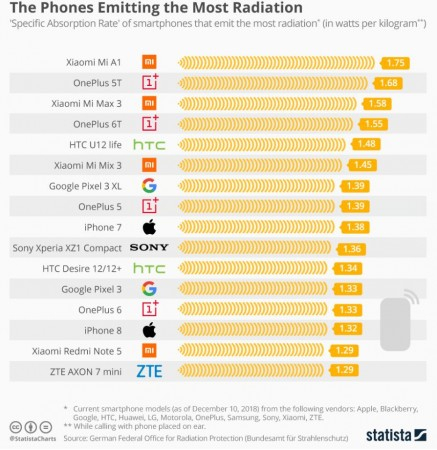
Ever since the commercial launch of smartphones in late 2000, they have become an extension of our body and lives. You won't spot a person without a phone, as it will either be in the hands or the pockets. Some have become so much attached to phones, without which, they will feel completely lost and believe it or not, there is a scientific term for this psychological disorder dubbed as 'Nomophobia'.
However, smartphone companies too, have understood the problem, as both Google and Apple have made changes to their respective mobile OS platforms—Android and iOS—to help phone owners balance their virtual and real life. The digital well-being feature will make users spend a little more time with friends and family than being hooked to mobile screens.
Besides the psychological impact, excessive phone usage will also affect your body, particularly the head, if exposed to radio waves in the form of electromagnetic radiation emitted while answering the calls for a longer duration on mobiles.
Statista citing the report of German Federal Office for Radiation Protection (Bundesamt für Strahlenschutz), has listed several branded phones that have emitting dangerous levels of radiation. What's shocking is that popular phones from Xiaomi and OnePlus have four in the top five.
Xiaomi Mi A1 tops the infamous list with 1.75 Specific Absorption Rate (SAR) ratings, followed by OnePlus 5T (1.68), Mi Max 3 (1.58), OnePlus 6T (1.55), HTC U12 Life (1.48), Mi Mix 3 (1.45), Google Pixel 3 XL (1.39), OnePlus 5 (1.39), Apple iPhone 7 (1.38), Sony Xperia XZ1 Compact (1.36) and more.

There are some research studies that have indicated that radiation emission from the phone during long calls may have an impact on health. Also, there are unsubstantiated reports on the Internet that people particularly men, should avoid keeping mobiles in the front trouser pockets as it might have an adverse effect on their sperm count. Recently, another research study surfaced online arguing that long exposure to mobile signals can affect heartbeat.
That is exactly why SAR information mandatorily listed in phones and retail box. For those unaware, SAR provides a straightforward means for measuring the Radio Frequency (RF) energy exposure characteristics of cell phones to ensure that they are within the safety guidelines set by the Federal Communications Commission (FCC).
All phones mandatorily undergo lab tests to show the RF energy exposure even at extreme cases must on have harmful effects on biological (cells & tissues) and liquid (chemical) composition of human body particularly in the brain.
It may be noted that FCC's norm dictates that SAR level should be at or below 1.6 watts per kilogram (W/kg) taken over the volume containing a mass of 1 gram of tissue that is absorbing the most signal. In Europe, mobile phones, and other such hand-held devices, the SAR limit is 2 W/kg averaged over the 10 g of tissue. But, they are usually done for a few minutes per day for a person with the average human build. It also doesn't take into account children, who have a smaller stature.
As said before, there is still no accurate data that we fully know the effect of long-term RF energy exposure on the human body and the research is still ongoing.









